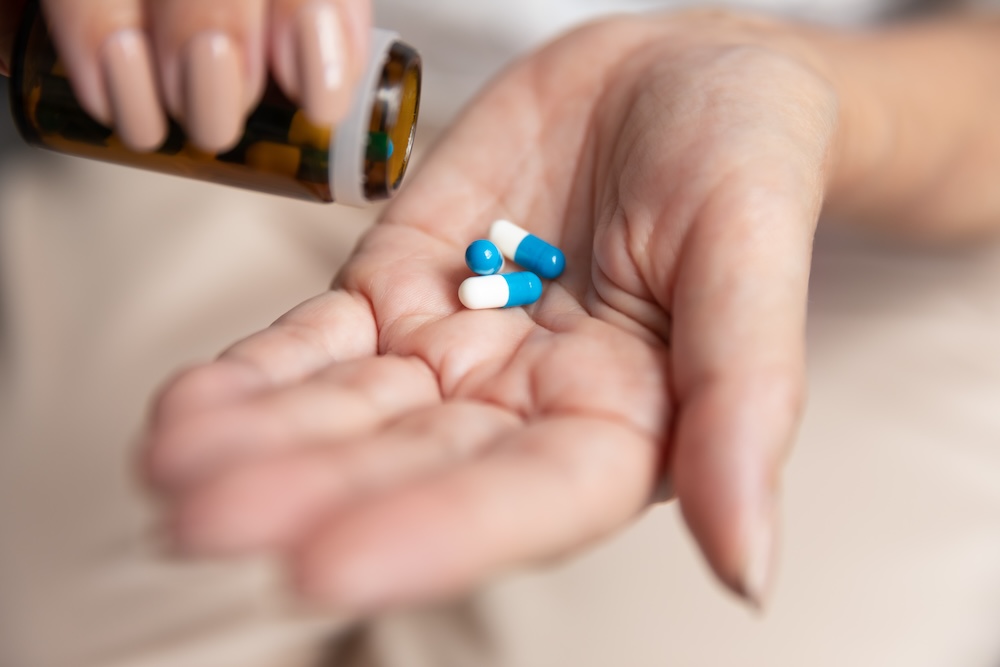Oestrogen gel is a hormone replacement therapy (HRT) that contains oestradiol. It’s used to help relieve the symptoms of menopause, like hot flushes and night sweats. Oestrogen gel is also known as transdermal oestrogen, which means it is absorbed through the skin.
Find what you need quickly:
- What is oestrogen?
- Who needs to take oestrogen as part of hormone replacement therapy?
- What are the different types of oestrogen HRT?
- Why should you consider oestrogen gel?
- How do you use oestrogen gel?
- Benefits of oestrogen gel
- Disadvantages of oestrogen gel
- What are the risks attached to oestrogen gel?
- What are the side effects of oestrogen gel?
- Final word
What is oestrogen?
Oestrogen is a female sex hormone, produced by the ovaries. It plays an important role in regulating many of your body’s functions, including how your reproductive system works.
In women, oestrogen levels change during the menopause. As you approach menopause (the end of monthly periods), oestrogen levels decrease which can cause unpleasant symptoms like hot flushes, night sweats, vaginal dryness and mood changes.
Hormone replacement therapy (HRT) relieves the symptoms caused by low oestrogen levels during menopause. HRT contains oestrogen and sometimes progesterone too.
Who needs to take oestrogen as part of hormone replacement therapy?
You may need oestrogen as part of hormone replacement therapy (HRT) if you’re experiencing menopausal symptoms such as hot flushes, night sweats, mood changes and vaginal symptoms (like dryness, tightness and itch). Your doctor will be able to tell you about your own personal treatment options.
What are the different types of oestrogen HRT?
Oestrogen HRT is available in different forms. The type of oestrogen HRT you need depends on your age and your symptoms.
Oestrogen can be used:
- systemically – meaning that the hormone is supplied to the whole body
- vaginally – meaning that only the tissues in and around the genitals are treated
Systemic HRT is needed to treat most menopause symptoms including hot flushes, mood changes and aches and pains. Systemic oestrogen is available as gels, patches, tablets, or sprays.
Vaginal HRT can be used if you only need treatment for symptoms of genitourinary syndrome of menopause (GSM) which include vaginal dryness, tightness, irritation and painful sex. Vaginal HRT can be supplied as creams, gels, pessaries or rings.
Each has advantages and disadvantages. Ultimately the best type for you will depend on your own lifestyle and preferences.
This article focuses on the kind of oestrogen gel used for systemic HRT. This is applied to the skin and then spreads through the bloodstream to the whole body.
While oestrogen gel is also available for vaginal use, it’s important to know that these products are different and not interchangeable! If you aren’t sure which you have been prescribed, speak to your doctor.
Learn more about different types of HRT.
Why should you consider oestrogen gel?
Oestrogen gel is a form of transdermal HRT, meaning that the hormones are absorbed through the skin.
This form of HRT is popular because:
- Like HRT patches, gels come with fewer risks than HRT tablets
- It can be convenient if you can’t use or don’t like patches – for example, if your skin reacts to the patch
- Your oestrogen dose can be easily increased or decreased as needed,simply by applying more or less of the product
For these reasons, oestrogen gels are often favoured by both doctors and patients.
How do you use oestrogen gel?
Oestrogen gel is rubbed onto your skin to be absorbed and released into your bloodstream. The leaflet in your pack will contain instructions, but in general you should:
- Apply the gel to clean, dry skin. The upper arms and thighs are both good options. Do not apply the gel to the breasts or genital area
- Do not wash or wet the skin, or apply skin products (like moisturisers and lotions) for at least an hour after applying your oestrogen gel
- Avoid close skin contact with others for at least one hour after applying the gel
- Leave the gel to dry for 5 minutes before getting dressed
- Wash your hands after applying the gel
If you still have your womb, you will also need to take some form of progesterone. This is because taking oestrogen alone can lead to abnormal thickening of the womb lining, and in some cases even cancer. Thankfully, using progesterone removes this risk. Progesterone is available in a number of different forms including tablets and intrauterine coils. Your doctor will be able to advise which options are available for you.
Benefits of oestrogen gel
Oestrogen gel is an effective form of HRT, and many users find it a good way to control their menopause symptoms. Oestrogen gel comes with all of the advantages of other forms of HRT, including boosting bone density and preventing osteoporosis.
Oestrogen gel is equally as effective as other forms of HRT including patches and tablets.
Like other forms of transdermal HRT (patches and sprays), oestrogen gel is not thought to come with any increased risk of blood clots.
Read more about the risks and benefits of HRT.
Disadvantages of oestrogen gel
1) Convenience
Oestrogen gel is applied daily. This can mean that it is harder to remember than patches, which are only changed twice per week.
2) Absorption
Applying the gel properly and allowing time for it to dry can also be more time-consuming than simply applying a patch or taking a pill. Similarly, if you have any problematic skin conditions, you may struggle to find an unaffected area of skin on which to apply the gel.
3) Cost
If you’re getting your HRT prescription privately, gel can be more cost effective than patches, but more expensive than tablets.
What are the risks attached to oestrogen gel?
Like all medications, HRT comes with certain risks as well as benefits. Your risk profile will depend not only on the oestrogen gel itself, but also your own personal medical history and any other medications you use alongside the gel (for example, progesterone if you need to take combined HRT).
Oestrogen gel is not thought to increase your risk of serious blood clots like pulmonary embolism or deep vein thrombosis (collectively known as venous thromboembolism or VTE). Despite this, if you have risk factors that put you at higher risk of these conditions (including strong family history or a BMI over 30), you may need to see a specialist for HRT to be prescribed.
What are the side effects of oestrogen gel?
Like all medications, oestrogen gel comes with certain side effects. These often include:
- Sore breasts
- Bloating
- Nausea
- Cramps
- Indigestion
- Irregular vaginal bleeding
These usually settle within the first 12 weeks of starting treatment. If they are severe or persistent, see your doctor. They might be able to advise a change of dose or type of oestrogen.
See your doctor urgently if you have any:
- Vaginal bleeding if it has been over one year since your last period
- Bleeding after sex
- Breast lumps or other changes (find out how to check your breasts)
- Any severe pain
- Leg swelling, tenderness or redness
- Chest pain or breathlessness
- Other persistent, severe or worrying symptoms
Final word
Oestrogen gel is a popular and convenient way to take HRT. Speak to your doctor if you would like to find out whether it would be a good fit for you.
Find out more about menopause on our blog or in our symptoms library.





